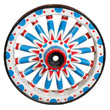Running Lioness Tableau / Ticket Wagon
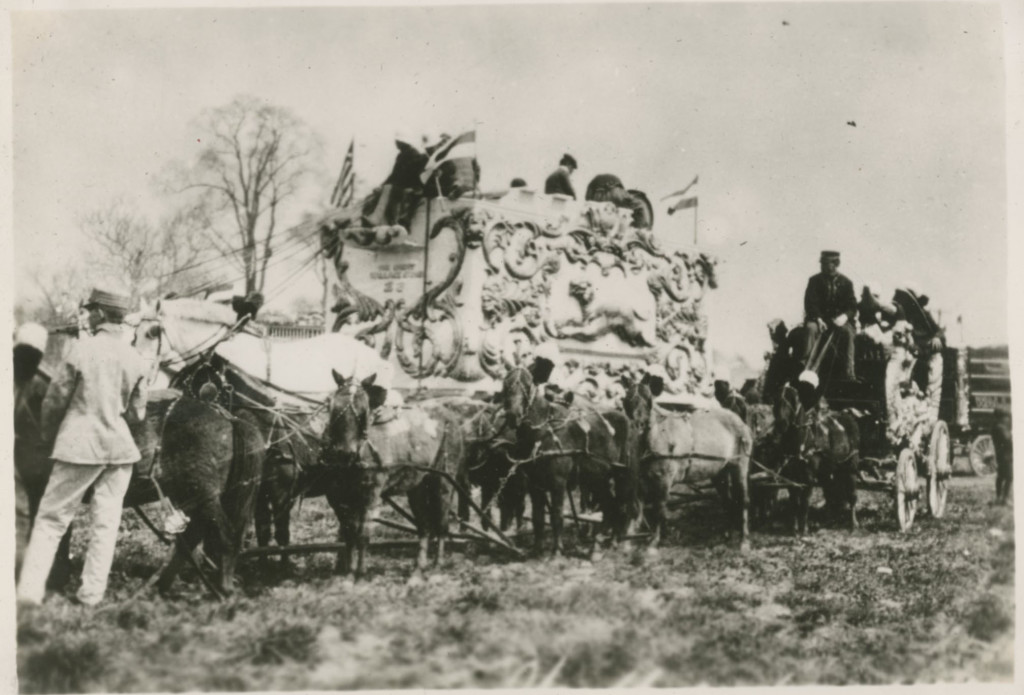
( 1904 – Joseph Bradbury Album # 9,photo # 59D – Great Wallace Shows – Wagon # 23 )
From Richard E. Conover (1).
Note: not all photographs accompanying this article are included.
During the last half of the 1890 decade, the Great Wallace Show obviously underwent a big expansion. This expansion also contributed to the hometown economy because Sullivan & Eagle, a firm in the Wallace winter quarters city of Peru, Ind., supplied at least 13 new parade wagons in this buildup. For the most part, these wagons were works of major proportions, distinctive for their line carvings in heavy relief, with four of the cages, in particular, having exceptionally massive corner posts. Besides these four, there were four other fine cages, including a hippopotamus den, a very fancy ticket wagon with clown-head carvings on its corners, a small parade chariot with carved eagles forward, and the two tableaus which are our subject. It is convenient and proper to consider these two tableaus together, because certain common characteristics in the artistry of their carvings almost assure that the same woodcarver did both of them, and because, for a span of years, they had a parallel history. From a camera angle, the origin of the Rhino Tableau was almost left out of the picture; the only one so far discovered of it while it was actually with Great Wallace reveals just one end of it in the fringes of a faraway lot scene and, as such, it is good for documentary purposes only. On the other hand, we have three good pictures of the Running Lioness Tableau on Great Wallace, the earliest taken in Neenah, Wisc., when the show played there on May 31, 1898. This Neenah picture (Photo No. 1) is an important contribution to this note, because it is the only one that shows the rear end. Likewise, and for the same purpose, Photo No. 2 has been chosen because it best shows the front end. Shortly after the Great Wallace and the Carl Hagenbeck Greater Shows were combined into Hagenbeck-Wallace in 1907, these two tableaus were sold to the Sells Floto Circus. We have good photographs (Nos. 3 and 4) of each of them with the Floto show, the one of the Rhino being, incidentally, the earliest satisfactory one of it.
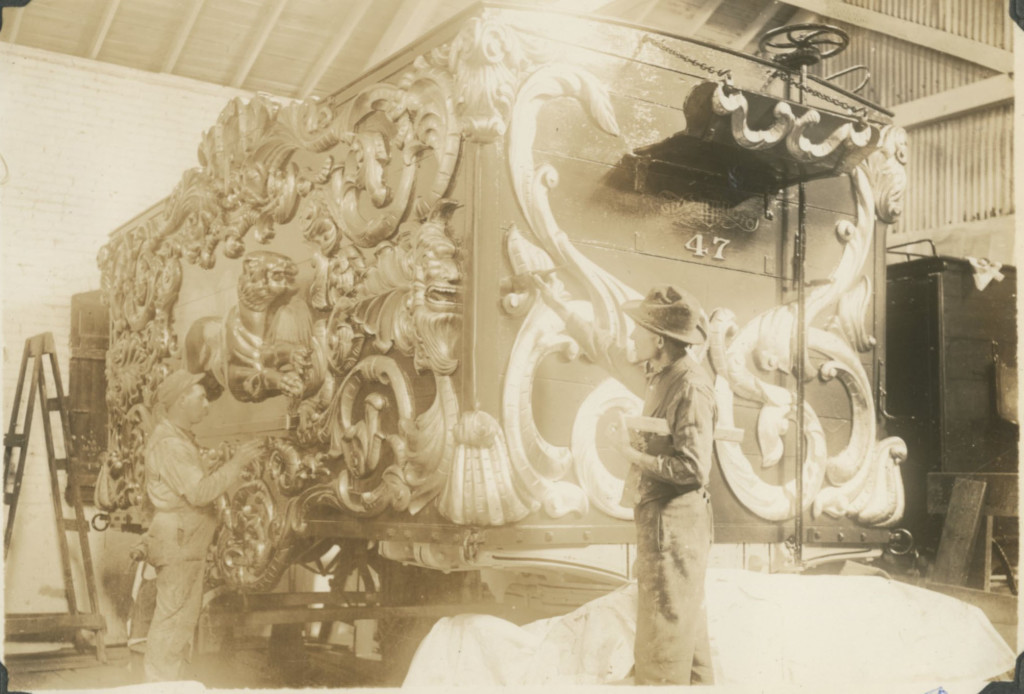
( 1912 – Joseph Bradbury Album # 25 – photo # 14B – Sells-Floto winter quarters – Running Lioness tab # 47 being painted – Melvin collection )
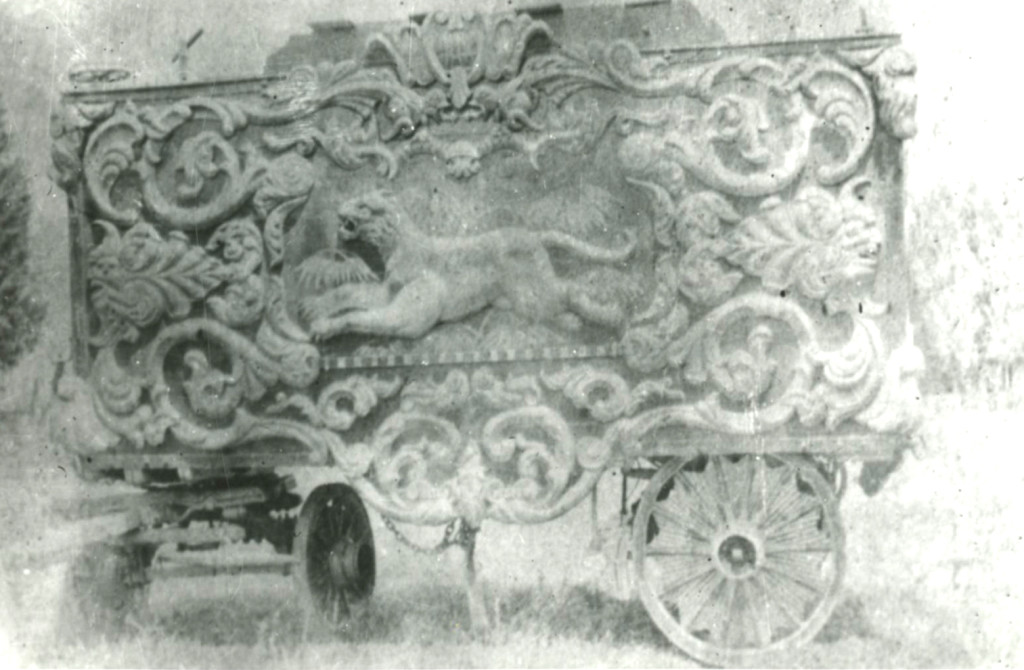
( 1918 maybe – Conover Set # 299 – photo # 3 – Kenneth Whipple collection )
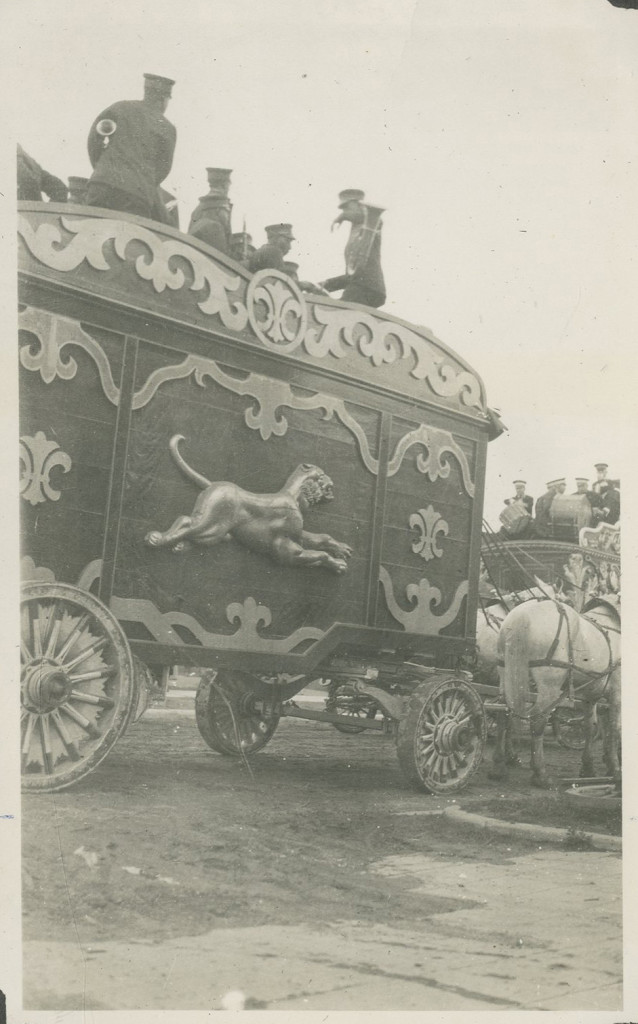
( 1924 – Joseph Bradbury Album # 10 – photo # 73G – Sells-Floto in Peru, In. April 28,1924 )
It’s possible that the lioness carving was put on a new wagon in the 1920s. This shows up in a 1924 photo from the Circus World Museum that shows the lioness carving on a drop frame wagon. This 1924 configuration is present again in 1925. The Joseph Bradbury notes indicate that he thought the wagon was on Sells-Floto in 1926 and 1928 but had not found any evidence to support this theory.
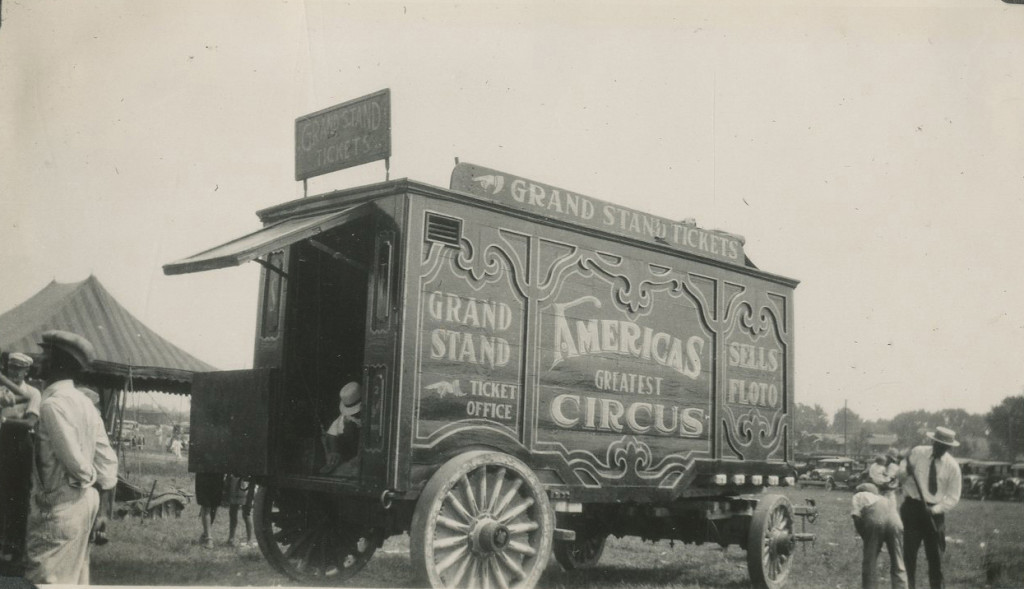
( 1929 – Joseph Bradbury Album # 10 – photo # 70F- Aug. 24, 1929 in Joplin, MO. )
The wagon was used as a Ticket wagon for every season but it carried a different paint and lettering scheme depending on what year you were examining. In 1929, the center section carried the phrase “America’s Greatest Circus.” By 1930, the Sells-Floto Circus was featuring Tom Mix and his wonder horse “Tony.”
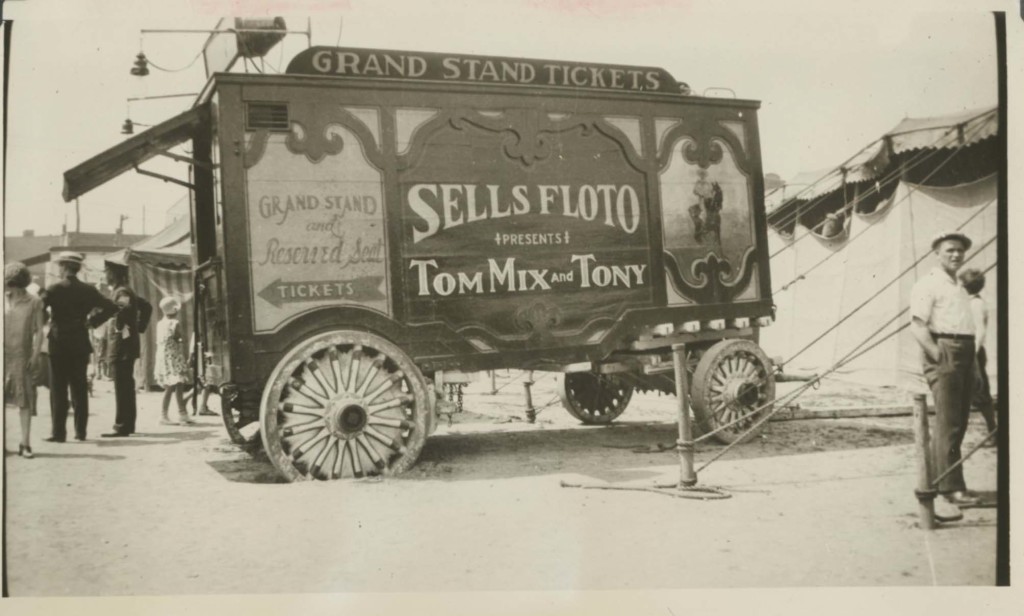
( 1930 – Joseph Bradbury Album # 47 – photo # 82B – Aug. 26, 1930 in Easton, Pa. – Warren H. Wood photo )
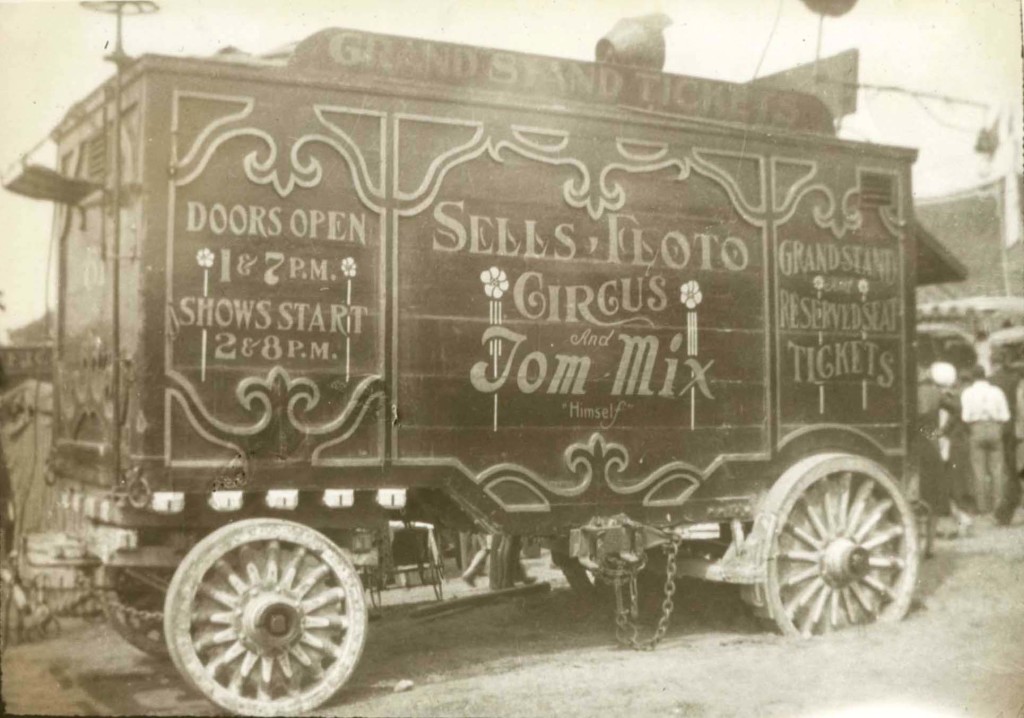
( 1931 – Joseph Bradbury Album # 48 – photo # 83A – June 19, 1931 in Jersey City, NJ – Warren H. Wood photo )
With Tom Mix no longer on the show in 1932, the wagon now carried the title of John Robinson’s 10 Big Shows on the top and the center added combined with Sells-Floto Circus with a nice painting of a clown. At the end of the 1932 season, the Sells-Floto Circus was scrapped by the Ringling management. This wagon was then transferred over to the Hagenbeck-Wallace Circus where it was re-painted again. A Tiger on a ball was the larger illustration with several smaller ones adorning the sides.
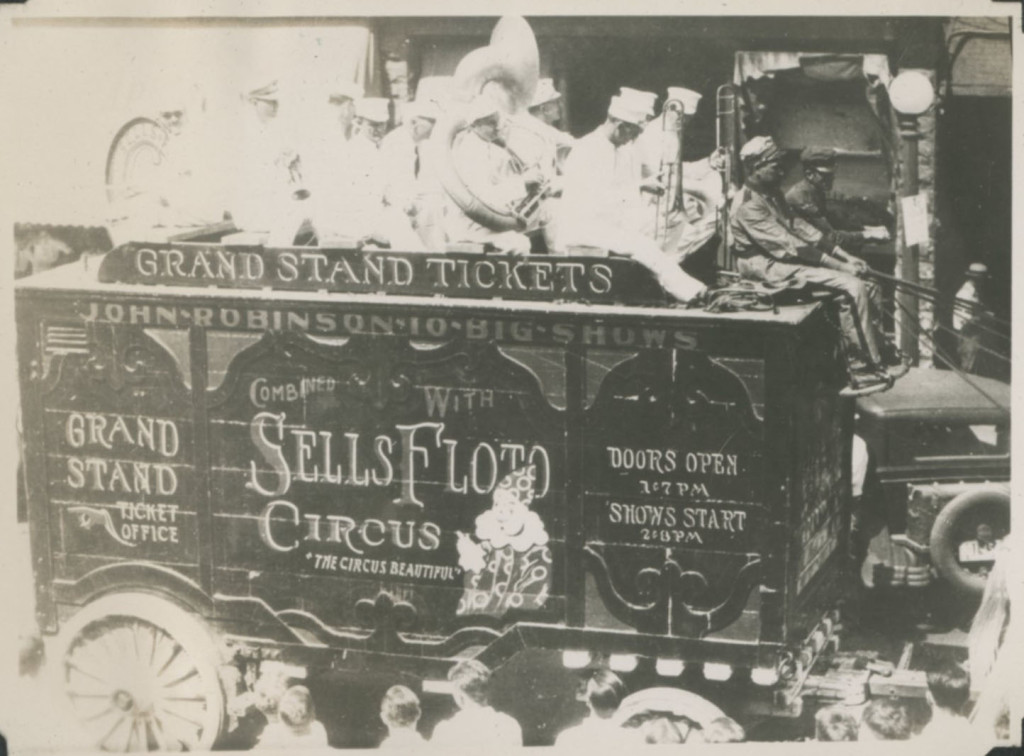
( 1932 – Joseph Bradbury Album # 25- photo # 98A – Sells-Floto Circus in parade, Band on #78 Ticket wagon, Sept. 12, 1932 in Bowling Green, KY. )
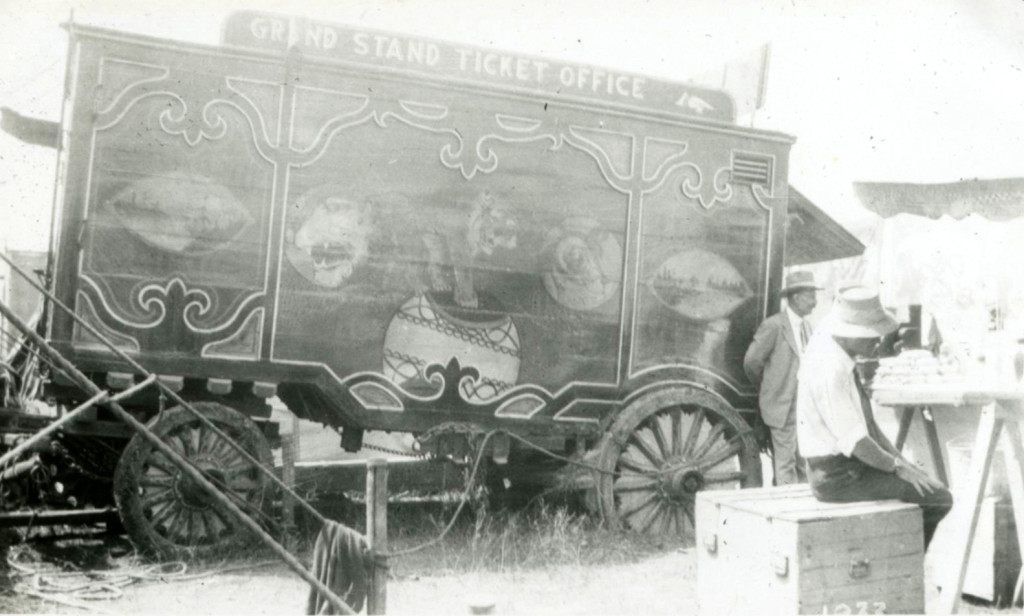
( 1933 – Joseph Bradbury Album # 31 – photo # 35A – Hagenbeck-Wallace in San Antonio, TX. on Monday Oct. 16, 1933 – Scaperlanda Bros. photo )
In 1934, the experienced hand of a cartoonist turned aerialist, turned clown, named Emmett Kelly, had the opportunity to paint this wagon again. This time the wagon was adorned with his version of Popeye, the Sailor man. The wagon was numbered # 46.
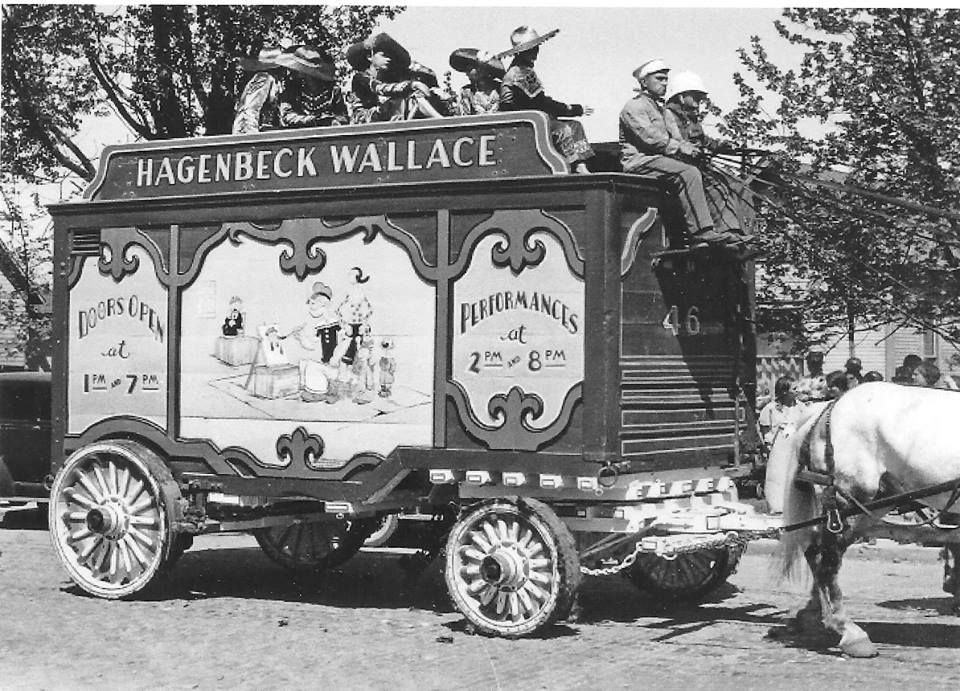
( 1934 on the Hagenbeck-Wallace Circus – Steve Flint collection )
If this wagon was ever used in 1935 is unclear. The Hagenbeck-Wallace Circus didn’t go out in 1936, so this remained off the road. Once again, the 1937 season saw this wagon with a complete new paint job on it. Popeye, the Sailor man was gone and had been replaced with a marching clown carrying a banner with the Hagenbeck-Wallace title in it.
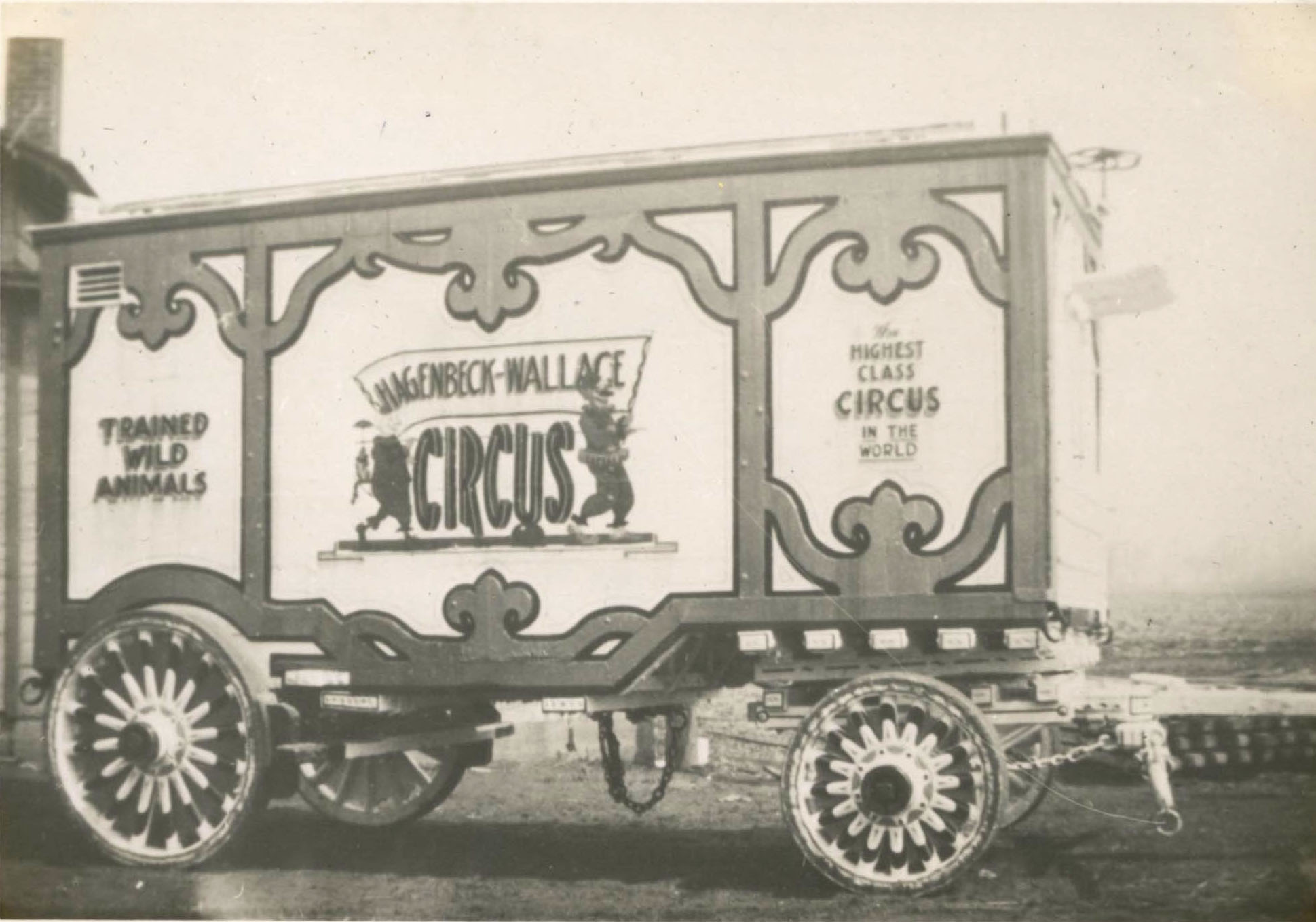
( 1937 – Joseph Bradbury Album # 64 – photo # 42A – Hagenbeck-Wallace April 4, 1937 in Peru winter quarters – Marion Lewis photo )
While the Hagenbeck-Wallace Circus was actually leased in 1937, the tour of 1938 was leased but some of the wagons were changed from the 1937 consist. This particular wagon remained in the Peru, Indian winter quarters when the Hagenbeck-Wallace Circus left in April of 1938.
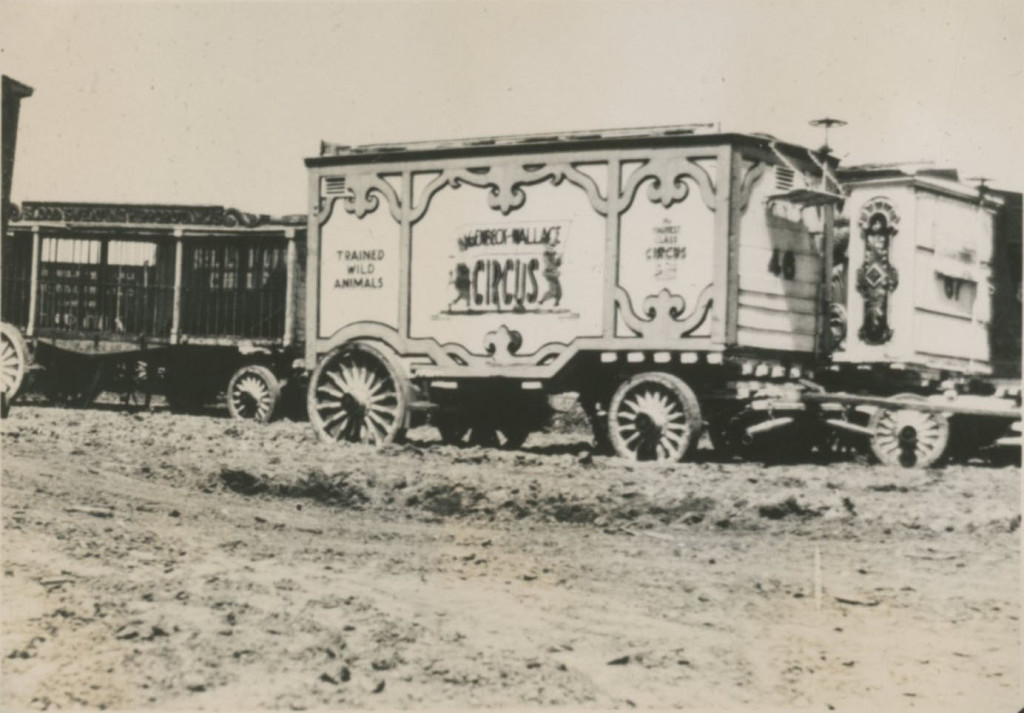
( 1938 – Joseph Bradbury Album # 9 – photo # 21C – Peru, WQ )
Unfortunately, this was the end of this wagon being used on any show. it perished in the November 1941 wagon burnings at the Peru, Indiana winter quarters.
(1) Bandwagon, Vol. 10, No. 1 (Jan-Feb), 1966, pp. 12-14.
(2) White Tops, November / December 1975, pp. 10-11
(3) Bannerline, March 1, 1951, Page 3, 1932 Train and Wagon List by Joe Bradbury
If you have any questions or have more photographic evidence, feel free to contact us at circuswagons@gmail.com
